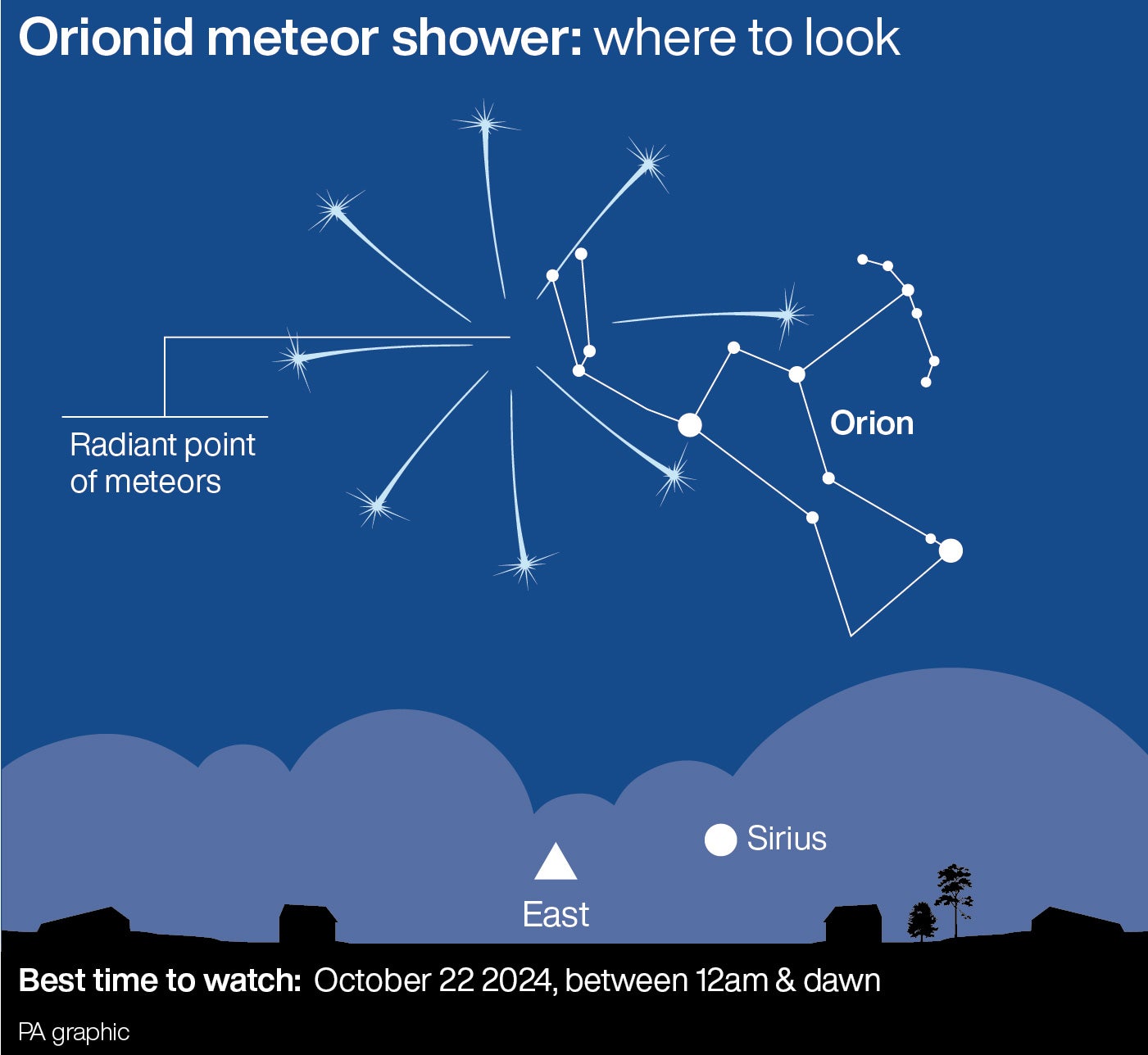
Skygazers could catch a glimpse of celestial fireworks as debris left by Halley’s Comet lights up the night sky.
The Orionid meteor shower is active throughout October but is expected to peak on Monday night, into the early hours of Tuesday.
The display will produce up to 25 fast meteors an hour, with fine trains.

The Orionids are considered by some to be particularly special as they are actually pieces of Comet 1P/Halley, better known as Halley’s Comet.
Although the comet swings by Earth only once every 75 to 76 years, this annual shower is some compensation for those who may miss that once-in-a-lifetime event.
As the comet follows its path around the sun, it leaves a path of tiny debris which enters Earth’s atmosphere at speeds of around 41 miles per second.
According to the Royal Museums Greenwich the meteor shower will be visible to the naked eye so there is no need for binoculars or a telescope, and a dark sky with limited light pollution and clear skies provide the ideal setting.
But chances of seeing the shooting stars could be limited due to the moon being waning gibbous.
However, the shower lasts until the first week of November so keen stargazers may be able to see some meteors from the display – which originates from the Orion constellation – at a later date.







